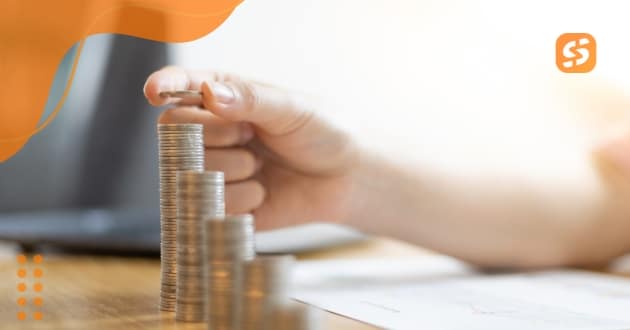Advertisements
Apply for personal loans can seem like a daunting task, but it doesn’t have to be. Whether you’re dealing with an unexpected expense, planning a major purchase, or consolidating debt, a personal loan can offer a solution to meet your financial needs.
With the right knowledge and preparation, applying for personal loans can be a straightforward process that helps you manage your finances effectively.
When considering a personal loan, many people are often unsure about how to navigate the application process. From understanding the different types of loans available to choosing the right lender and ensuring that you qualify, the process may feel overwhelming at first.
However, by breaking down the steps and arming yourself with the right information, you can make the experience much smoother and more manageable.
Advertisements
In this comprehensive guide, we will take you through every step of how to apply for personal loans. We’ll cover everything from assessing your financial needs, comparing different lenders, understanding loan requirements, and completing the application process.
Whether you’re a first-time borrower or looking to improve your financial situation, this guide will equip you with the tools you need to make informed decisions. So, let’s get started and help you confidently navigate the world of personal loans!
What Are Personal Loans?
A personal loan is an unsecured loan that allows you to borrow a specific amount of money to cover personal expenses, which you then repay over a predetermined period with fixed monthly installments.
One of the main advantages of personal loans is that they offer flexibility in how the funds can be used. Whether you need money for medical bills, a wedding, or home improvements, personal loans provide the financial freedom to cover various expenses. Additionally, personal loans are often used for debt consolidation, where you combine multiple high-interest debts into one more manageable monthly payment, potentially saving money on interest over time.
However, it’s important to note that applying for personal loans requires understanding the terms and conditions associated with the loan. For instance, while the loan amount, interest rate, and repayment term vary depending on the lender and your credit score, personal loans generally offer lower interest rates than credit cards.
That said, the interest rate will depend on factors such as your credit score, income, and the loan term. Thus, it’s essential to shop around for the best rates and loan terms.
In addition to personal expenses, some entrepreneurs may consider personal loans as a way to finance AI-based entrepreneurship ventures. With AI technology transforming industries, entrepreneurs might use personal loans to fund initial developments or start a business in the rapidly growing AI sector.
However, just like with any other financial decision, it’s vital to weigh the pros and cons carefully before taking on debt for such ventures.
Why You Should Consider Applying for Personal Loans
Before you decide to apply for a personal loan, it’s essential to understand the advantages that come with it. Some key benefits include:
- Lower interest rates: Compared to credit cards, personal loans often come with more competitive interest rates.
- Predictable payments: With fixed interest rates and terms, your monthly payments will remain the same throughout the life of the loan.
- Flexible use of funds: Personal loans are often unsecured, meaning you can use the funds for almost any purpose without restrictions.
- Consolidation of debt: Personal loans offer a way to consolidate high-interest debts, reducing your overall payment burden.
While personal loans can be a great financial tool, it’s important to consider whether it’s the right option for your needs.
How to Apply for Personal Loans
Now that you understand what personal loans are and why they might be useful, let’s walk through the steps of applying for personal loans.

1 – Assess Your Financial Situation
The first step in applying for personal loans is to assess your financial needs and situation. Ask yourself the following questions:
- How much do you need to borrow? Make sure to borrow only what you need to avoid taking on unnecessary debt.
- What can you afford to repay? Calculate your monthly expenses to determine how much you can realistically afford to pay each month toward a loan.
- What is your credit score? Your credit score plays a significant role in determining your loan’s interest rate and approval chances.
It’s also a good idea to check your credit report before applying for a personal loan. Knowing your score and identifying any errors or discrepancies can help you make informed decisions about lenders and loan terms.
2 – Shop Around for Lenders apply for personal loans
Once you’ve assessed your financial situation, it’s time to shop around for lenders. Different lenders offer different loan terms, interest rates, and fees, so it’s important to compare a variety of options.
Consider the following types of lenders:
- Traditional banks: These lenders often offer competitive rates, especially for borrowers with good credit. However, they may have stricter requirements for loan approval.
- Credit unions: Credit unions can offer lower interest rates than banks and may be more flexible with their requirements.
- Online lenders: Many online lenders provide personal loans with fast application processes and competitive rates. However, they may charge higher fees for borrowers with lower credit scores.
When shopping for a lender, compare the interest rates, repayment terms, fees, and customer reviews to determine which lender best meets your needs.
3 – Check the Loan Requirements
Each lender will have specific requirements for applying for personal loans. Make sure to carefully review the eligibility criteria before proceeding with your application. Common requirements include:
- Minimum credit score: Lenders often have a minimum credit score requirement, typically ranging from 600 to 700. However, some lenders may be more flexible and offer loans to borrowers with lower credit scores.
- Proof of income: Lenders want to ensure you have the financial means to repay the loan, so they may require proof of employment or income.
- Debt-to-income ratio: Lenders often consider your debt-to-income ratio, which compares your monthly debt payments to your gross monthly income. A lower ratio increases your chances of approval.
Before you apply, ensure that you meet the lender’s eligibility criteria to avoid wasting time with applications that may be rejected.
4 – Gather the Necessary Documents apply for personal loans
To complete the application process, you will need to provide certain documents to the lender. The specific documents required will vary by lender, but typically include:
- Proof of identity: A government-issued ID, such as a passport or driver’s license.
- Proof of income: Recent pay stubs, tax returns, or bank statements to verify your income.
- Proof of address: A utility bill or lease agreement to confirm your current address.
Having these documents ready will streamline the application process and help ensure that your application is processed quickly.
5 – Complete the Application
Once you have all your documents in order, it’s time to complete the application. Many lenders offer online applications that can be completed in just a few minutes. Some lenders may also allow you to apply in person or over the phone.
When completing the application, make sure to:
- Provide accurate information: Any discrepancies or errors could delay your application or result in rejection.
- Double-check loan terms: Ensure that you understand the loan amount, interest rate, repayment term, and any fees before submitting your application.
- Review your budget: Consider how the monthly payments will fit into your budget before you proceed.
6 – Wait for Approval apply for personal loans
After you submit your application, the lender will review your information and determine whether you qualify for the loan. This process typically takes anywhere from a few minutes to a few business days, depending on the lender and your application.
Once approved, you will receive a loan offer outlining the loan amount, interest rate, and repayment terms. At this point, you can either accept the loan or negotiate the terms. If you’re happy with the offer, you can sign the agreement and receive the funds.
7 – Repay the Loan
Once you receive the loan, it’s essential to stay on top of your repayments. Set up automatic payments or reminders to ensure you make payments on time. Missing payments can negatively affect your credit score and lead to additional fees.
Be sure to review the loan agreement to understand the consequences of missed payments and the available options for repayment flexibility if necessary.
Common Mistakes to Avoid When Applying for Personal Loans
While applying for personal loans is a relatively simple process, there are several common mistakes that borrowers should avoid. These include:
- Not checking your credit score: Failing to check your credit score before applying can result in surprises when you see the interest rates offered by lenders. Always know your credit score before applying.
- Overborrowing: Borrowing more than you need can put unnecessary strain on your finances. Stick to borrowing only what you need.
- Ignoring the fine print: Some lenders may charge hidden fees or have prepayment penalties. Always read the loan agreement carefully before signing.
Conclusion
Applying for personal loans can provide much-needed financial relief for various expenses, from debt consolidation to major purchases. By carefully assessing your financial situation, comparing lenders, and understanding the loan terms, you can make a well-informed decision that aligns with your needs.
It’s essential to understand the repayment terms, interest rates, and fees associated with personal loans to ensure they fit within your budget.
While personal loans offer benefits like lower interest rates compared to credit cards, they should be approached responsibly. Borrow only what you can afford to repay, and ensure you understand the terms and conditions of the loan.
If you’re considering using a loan for business purposes, such as AI-based entrepreneurship, it’s important to plan carefully to ensure the loan helps fuel your long-term goals without adding unnecessary financial strain.
For more details on personal loans and how to apply, visit official resources like the Consumer Financial Protection Bureau (CFPB), which provides comprehensive information on managing loans and protecting your financial well-being. By following these guidelines, you can confidently navigate the loan process and make smart financial decisions.



















